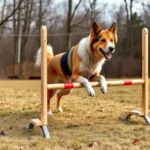
Introduction
Running with your dog is not just a fun activity; it’s a fantastic way to bond, stay fit, and enrich both your lives. The benefits extend beyond mere physical exercise, touching on mental well-being and social engagement. However, to ensure a safe and enjoyable experience, proper training and preparation are crucial. This article delves into the benefits of running with your dog, how to prepare for your running journey, effective training techniques, safety tips, and much more.
Benefits of Running with Your Dog
Physical Benefits
Running is a high-impact exercise that promotes cardiovascular health for both you and your dog. Engaging in regular physical activity helps manage weight, increases muscle tone, and enhances overall fitness. For dogs, running can also help maintain a healthy weight, reducing the risk of obesity-related conditions.
Mental Benefits
Running provides significant mental stimulation for dogs, reducing anxiety and behavioral issues. The activity can alleviate boredom and pent-up energy, resulting in a happier and calmer pet. Additionally, the time spent running together strengthens the bond between you and your dog, fostering trust and companionship.
Social Benefits
Running opens doors to socialization opportunities for both you and your dog. Engaging with other dog owners can lead to new friendships and a sense of community. Many cities have running clubs that welcome dogs, providing a great way to meet like-minded individuals while enjoying a healthy activity.
Preparing for Your Running Journey
Assessing Your Dog’s Health
Before embarking on your running journey, it’s essential to ensure your dog is healthy enough for the activity. Schedule a veterinary check-up to discuss your plans. Look for signs that your dog is ready to run, such as enthusiasm for outdoor activities, a healthy weight, and age-appropriate physical condition.
Choosing the Right Gear
Selecting appropriate gear is critical for both you and your dog. For your dog, consider a comfortable collar, leash, or harness that’s suitable for running. Harnesses are often recommended for larger breeds to prevent strain on the neck. As for you, invest in a pair of high-quality running shoes that provide adequate support and cushioning.
Creating a Running Plan
Establishing a running routine with realistic goals will make the journey enjoyable and sustainable. Start with shorter distances and gradually increase the duration and pace to avoid injury. Consistency is key, so aim for regular running days each week to build a habit.
Training Your Dog to Run
Basic Obedience Training
To ensure safety while running, it’s vital to teach your dog basic commands such as sit, stay, and heel. These commands are essential for managing your dog’s behavior during runs, especially in busy areas. Use positive reinforcement techniques like treats and praise to reinforce obedience.
Building Endurance
Start by building your dog’s endurance gradually. If your dog is not used to running, begin with short distances and slowly increase the length of your runs. Incorporating interval training can be beneficial; alternate between short bursts of running and walking to help your dog adapt to longer distances.
Leash Training
Good leash manners are crucial for a pleasant running experience. Teach your dog to walk on a loose leash, which allows for a more relaxed pace. Techniques such as stopping when your dog pulls and rewarding them for staying close can help instill good leash behavior.
Safety Tips for Running with Your Dog
Weather Considerations
Be mindful of the weather conditions when planning your runs. In hot weather, watch for signs of heat exhaustion, such as excessive panting or lethargy. On particularly warm days, try to run early in the morning or later in the evening when temperatures are cooler. In winter, take precautions against cold weather; not all dogs are equipped to handle low temperatures, especially smaller or short-haired breeds.
Hydration
Hydration is paramount for both you and your dog. Ensure you take regular water breaks during your runs, particularly on warmer days. Consider carrying a portable dog bowl or using hydration packs designed for dog owners to keep your furry friend hydrated.
Identifying Risks
Being aware of your surroundings while running is essential. Stay vigilant for traffic, other animals, and potential hazards such as hot pavement or wildlife. Teaching your dog to focus on you and follow commands can prevent unwanted incidents during your run.
Running Techniques for Owners and Dogs
Pacing and Breathing
Finding the right pace is vital for a successful running experience. Ensure it’s comfortable for both you and your dog. Start at a slow pace and gradually increase your speed as you both build endurance. Employing proper breathing techniques can enhance your performance; inhale deeply through your nose and exhale through your mouth in a rhythmic pattern.
Running Styles
There are various running styles to consider, including jogging, trail running, and sprinting. Choose a method that suits both your fitness level and your dog’s energy. For example, trail running can provide stimulating new scents and environments for your dog, making the experience more enjoyable.
Incorporating Playtime and Variety
Mixing in Games
Integrating games into your running routine can keep both you and your dog engaged. Consider incorporating fetch or other interactive games during breaks to add a fun element to your runs. This variety can enhance mental engagement and prevent boredom.
Exploring New Routes
Changing your running routes can keep the experience fresh and exciting. Look for dog-friendly parks or trails in your area to explore. New scenery can stimulate your dog’s senses and make each run an adventure.
Recognizing Signs of Fatigue or Stress
Behavioral Indicators
It’s essential to be attuned to your dog’s behavior during runs. Watch for signs of tiredness or discomfort, such as lagging behind, excessive panting, or reluctance to continue. Knowing when to stop or take breaks is crucial for your dog’s health and safety.
Post-Run Care
After your run, implement recovery techniques to help your dog cool down. Gentle stretching can alleviate muscle tension, while a cool bath or wipe-down can refresh your dog post-run. Monitoring your dog’s health after runs is also important; keep an eye on their energy levels and any signs of discomfort.
Conclusion
Running with your dog can be an enriching experience that benefits both of you physically and mentally. By taking the time to prepare properly, train effectively, and prioritize safety, you can create a fulfilling routine that strengthens your bond while keeping you both healthy. So lace up those running shoes, grab a leash, and hit the pavement with your furry friend—there’s a whole world of adventure waiting for you!









